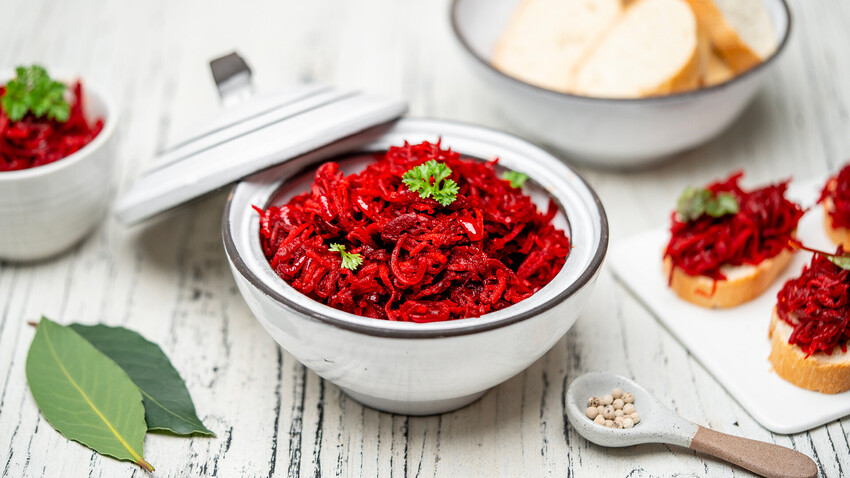
Anything called ‘caviar’ in Russia is an exquisite dish worthy of attention.
Yulia MulinoIn Russian cuisine, the concept of vegetable caviar is quite common. This type of caviar has nothing to do with fish eggs, but rather, it’s a shredded mass of vegetables. The most popular vegetable caviar are made from squash and eggplant. However, not everyone knows that beets can also be used to make a savory, juicy, versatile caviar dish.
Beet caviar is a homogeneous mass primarily made of beets but with the addition of onion and roasted carrot. Sometimes, parsnip or celery roots are added. The recipe also includes tomato paste for a sour taste and more intense color.
Usually, the beets for this dish are first boiled and then fried in oil with the addition of spices. I cook it in a different way and start frying raw beets at once. This way I save time and preserve the juiciness of the beets.
In the Soviet era, beet caviar could be found sold in cans in food stores, but housewives also cooked it at home. In our family, for example, it was one of my grandmother's favorite recipes. During Lent this dish was often on the table.
Beet caviar is very easy and quick to prepare, and it has a lot of potential. It can be prepared and served as an appetizer: it’s most often served with soft, fresh wheat bread. It’s also the perfect side dish to fish or an accompaniment to mashed potatoes. It can also be used as a borsch-starter. If you prepare beet caviar correctly, even those who are not fans of beets will love it.
First of all, frying the onions and carrots makes this dish juicy. The more golden fried onions and oil, the more the caviar will be sweeter and silky. The onions need to be fried separately, and then only add the carrots. This way the onions will be well fried rather than stew. I always add bay leaf - it lessens the beet flavor. And the beets obtain the most flavor when you add just a little vinegar and pepper.
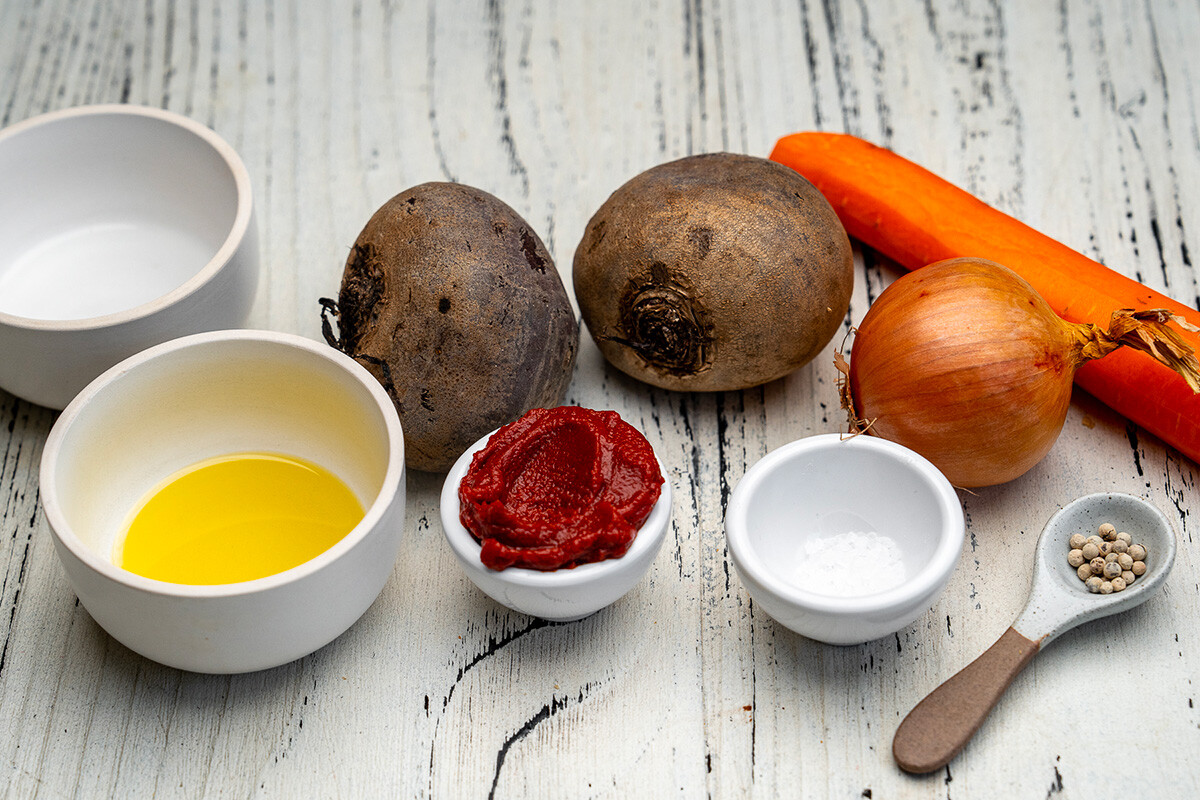
1. Cut onions into thin slices and fry them in vegetable oil. The more oil, the more tender the texture will be. I didn't add much, however. My grandmother's caviar was always glistening from the ample vegetable oil that she added.
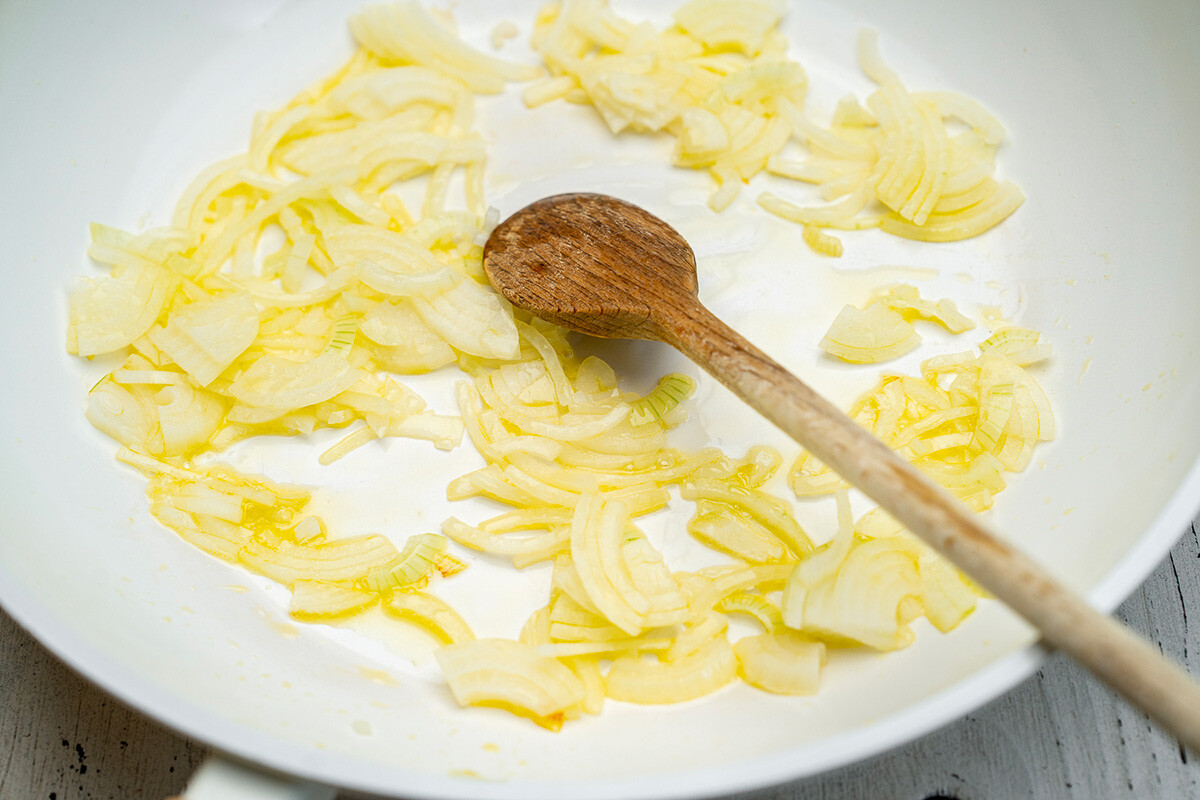
2. When the onion becomes transparent, then add grated carrots.
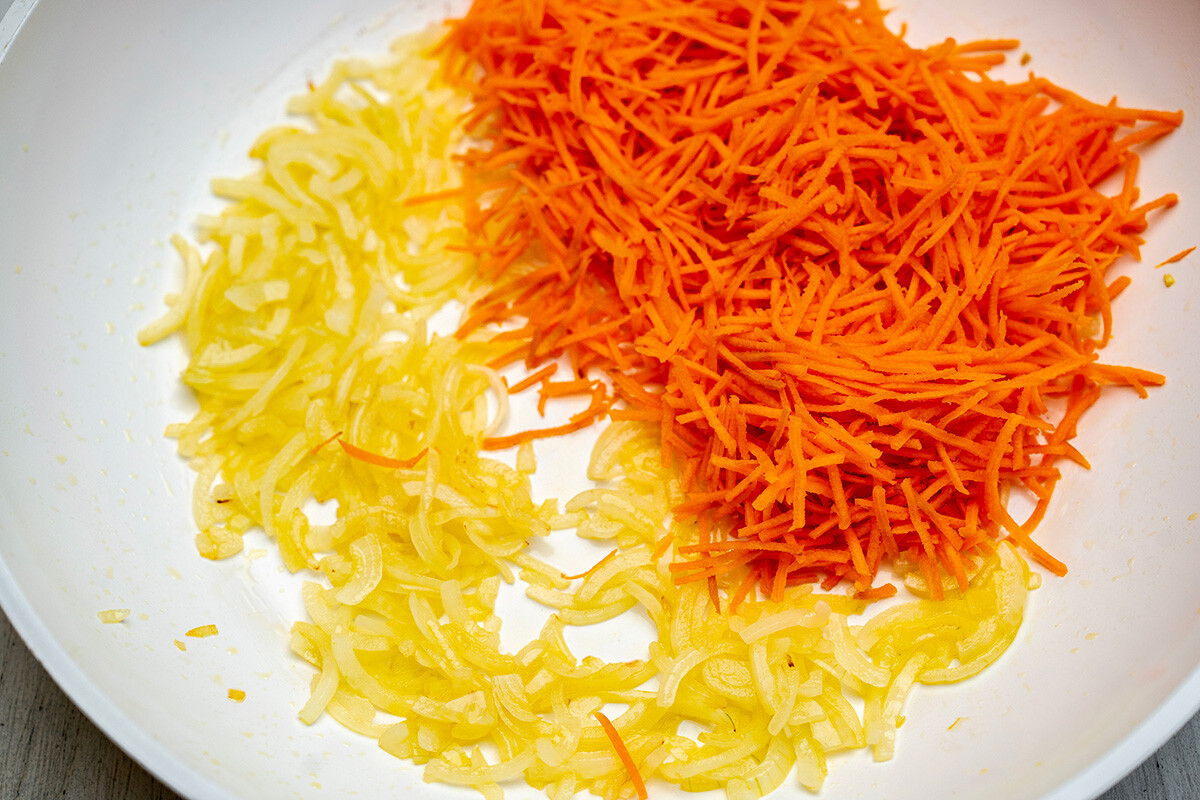
3. Fry until soft, and add salt.
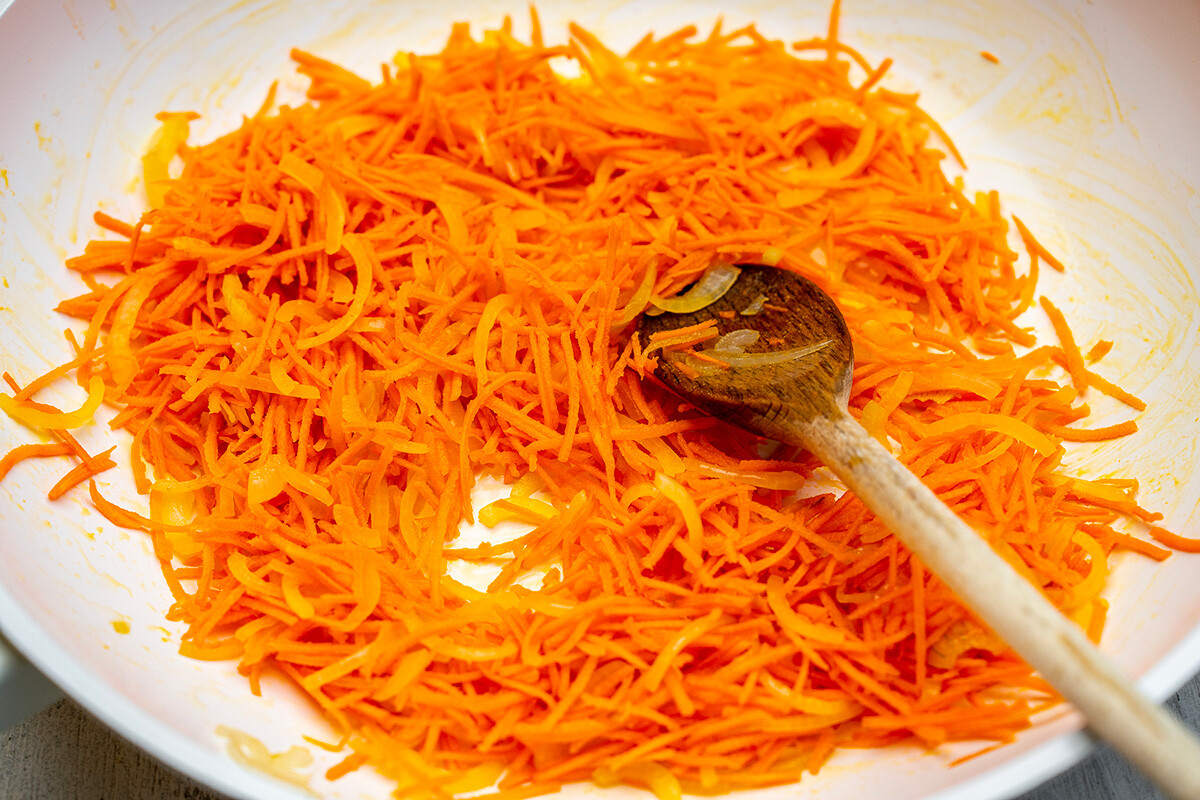
4. In another pan, fry the grated beets in oil.
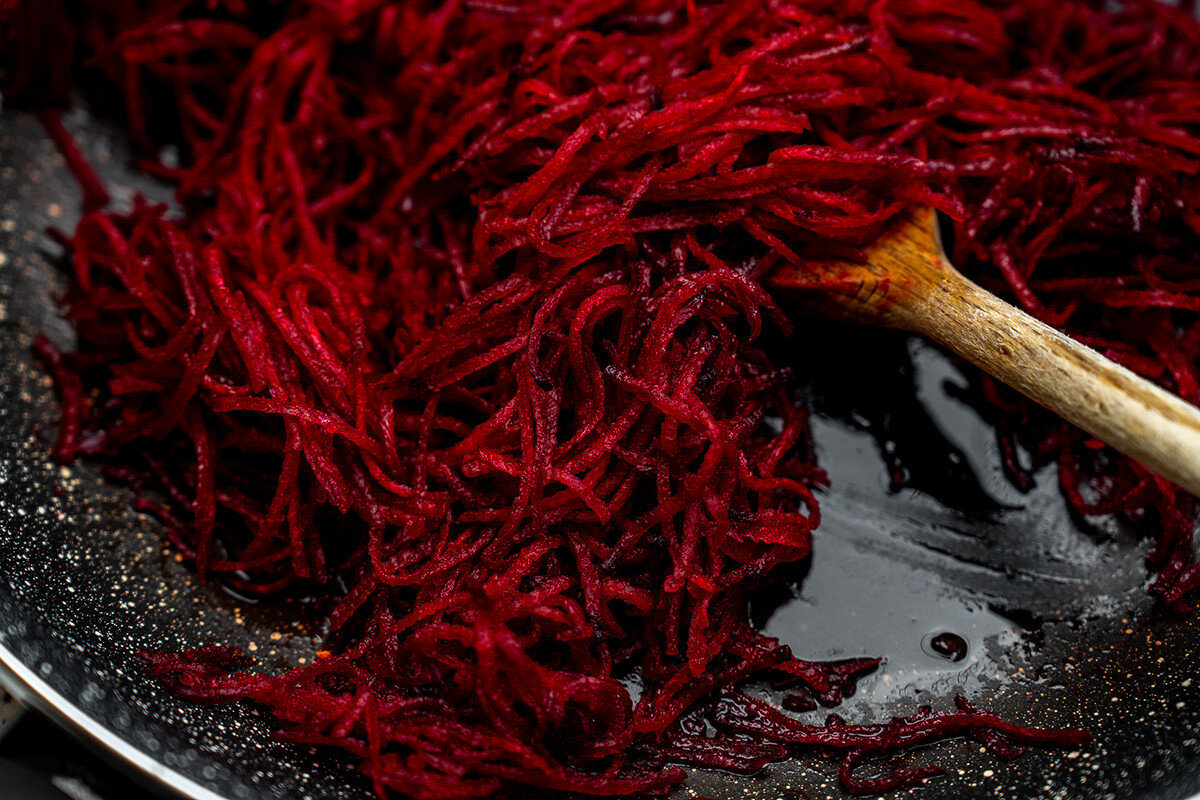
5. Add tomato paste, pepper and bay leaf.
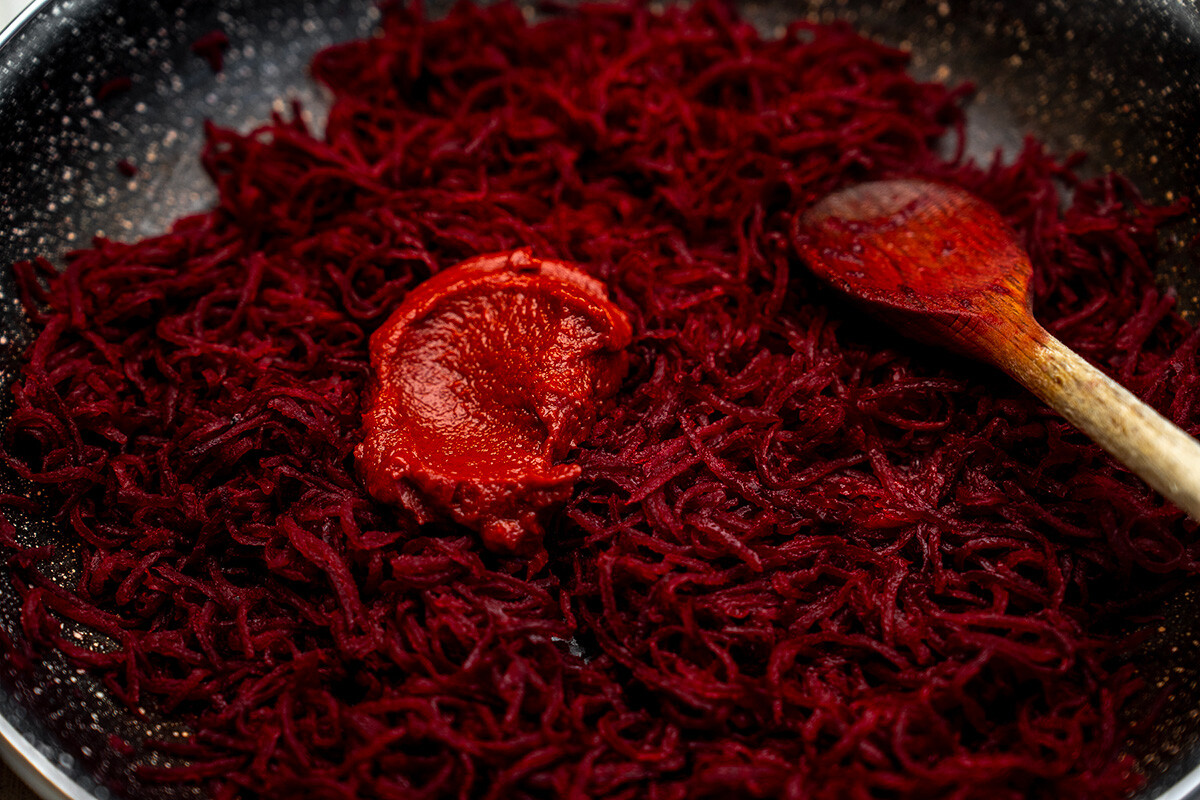
6. Add boiling water in order to thin the tomato paste. Stew the beets for about 10-15 minutes.
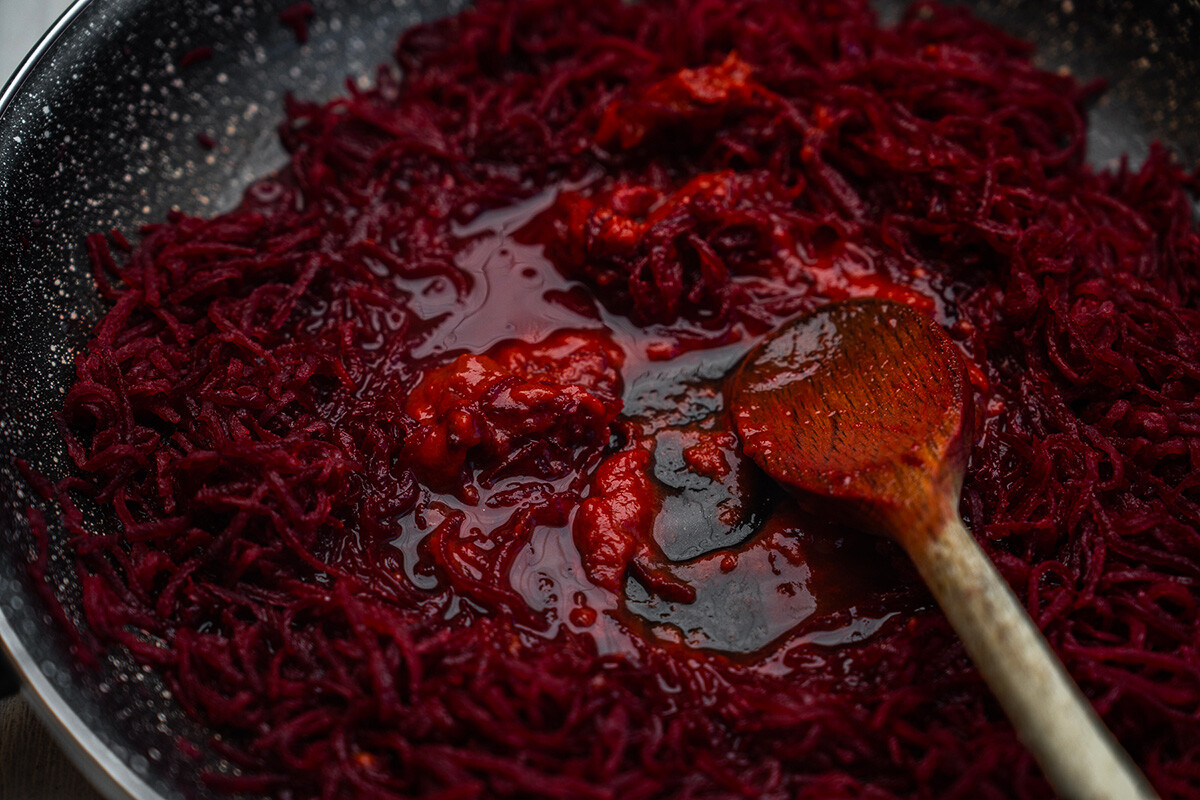
7. Combine the roasted vegetables and beets.
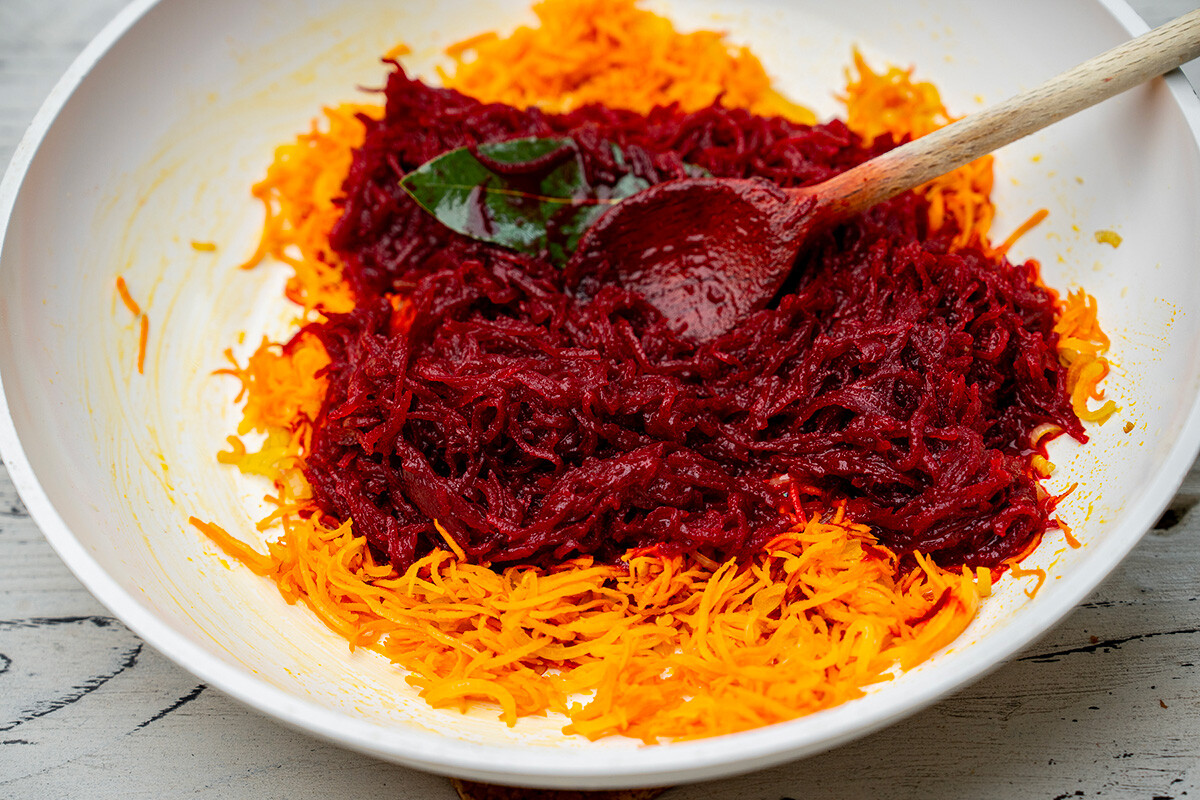
8. Fry together for about 5 minutes.
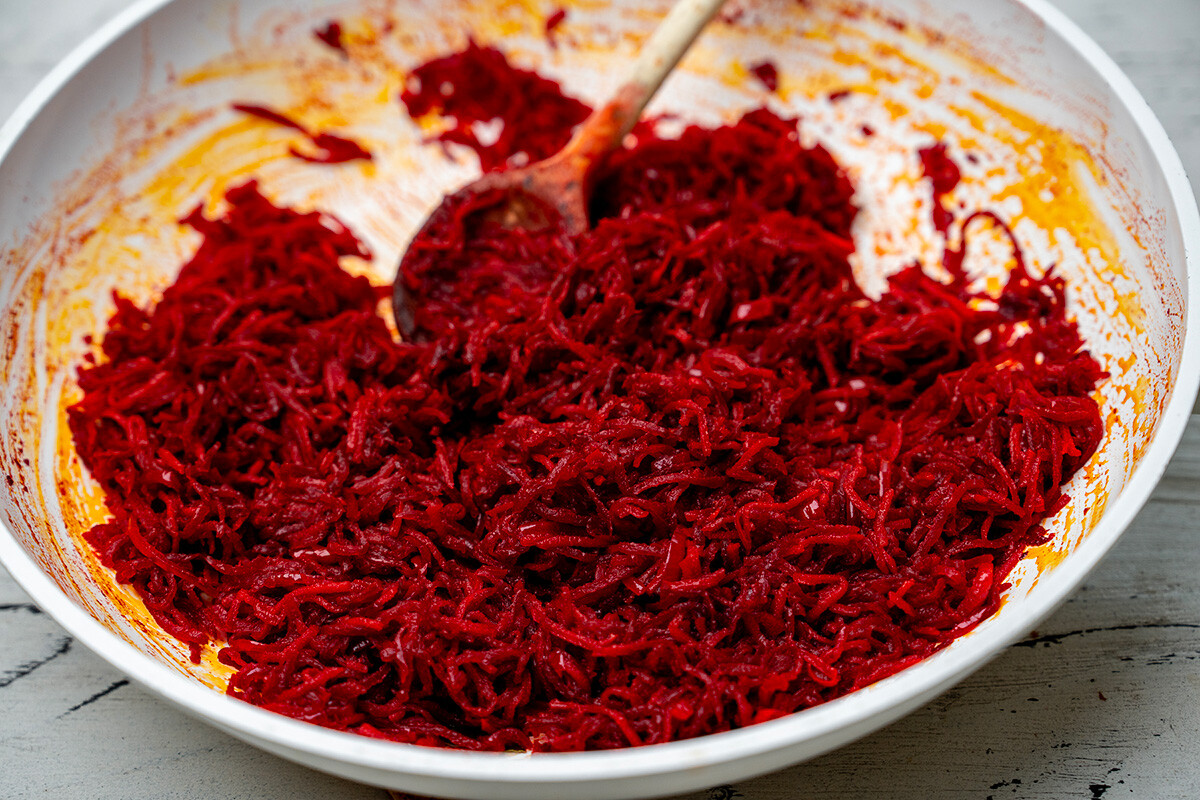
9. Add the vinegar, stir and remove from the heat.
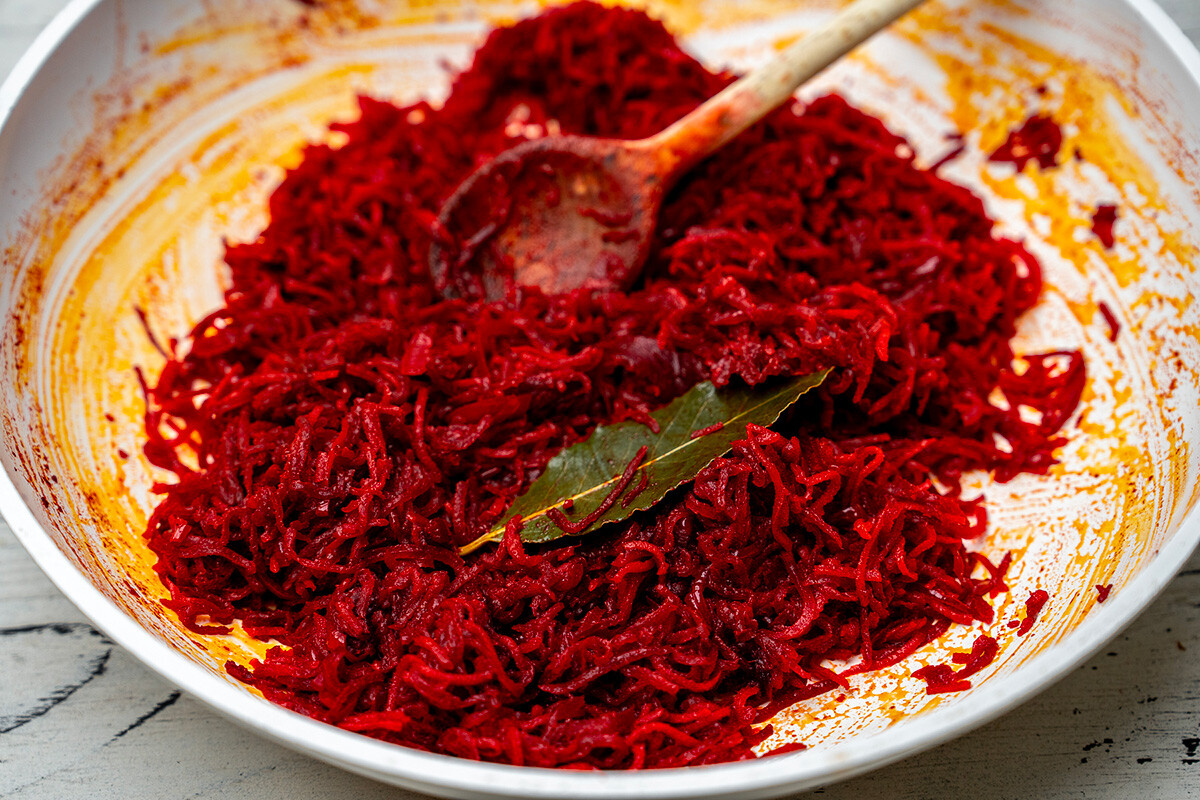
10. Your dish can be served immediately, or the next day, with wheat bread and greens such as parsley or cilantro. Keep in the refrigerator.
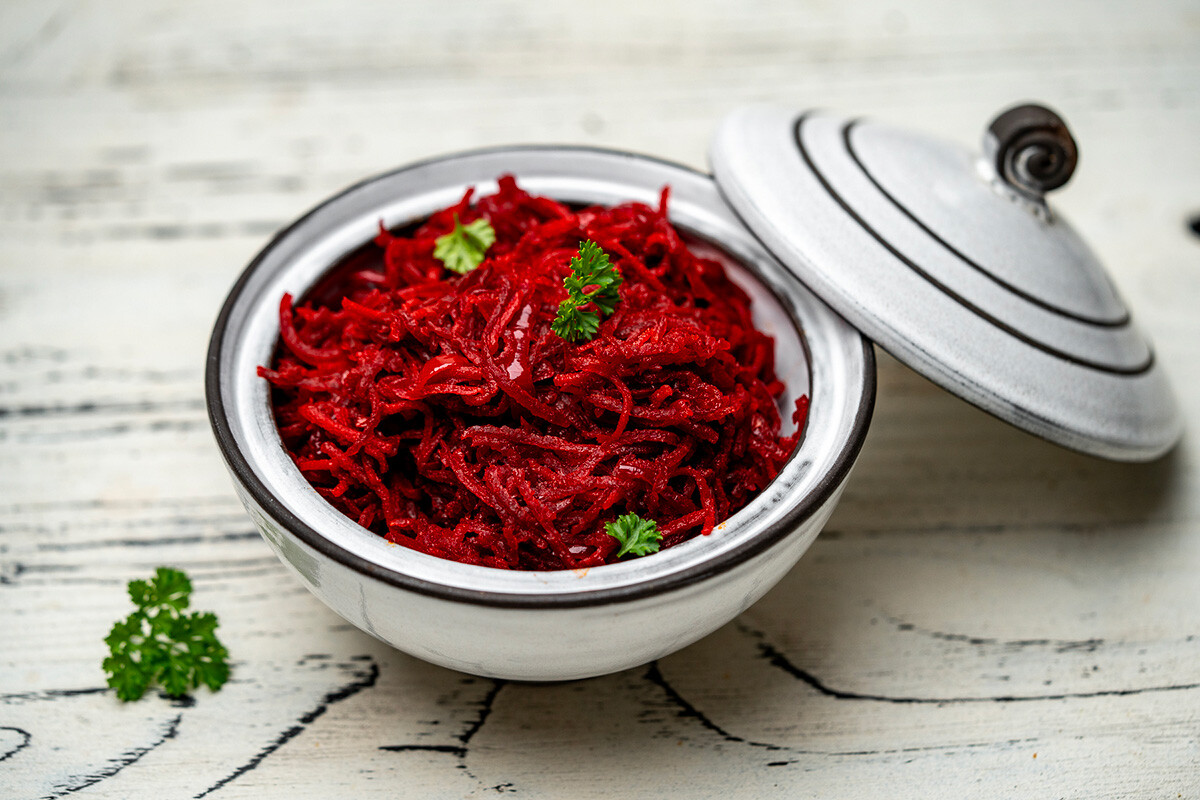
11. Serve your beet caviar on slices of freshly flavored bread. Enjoy!
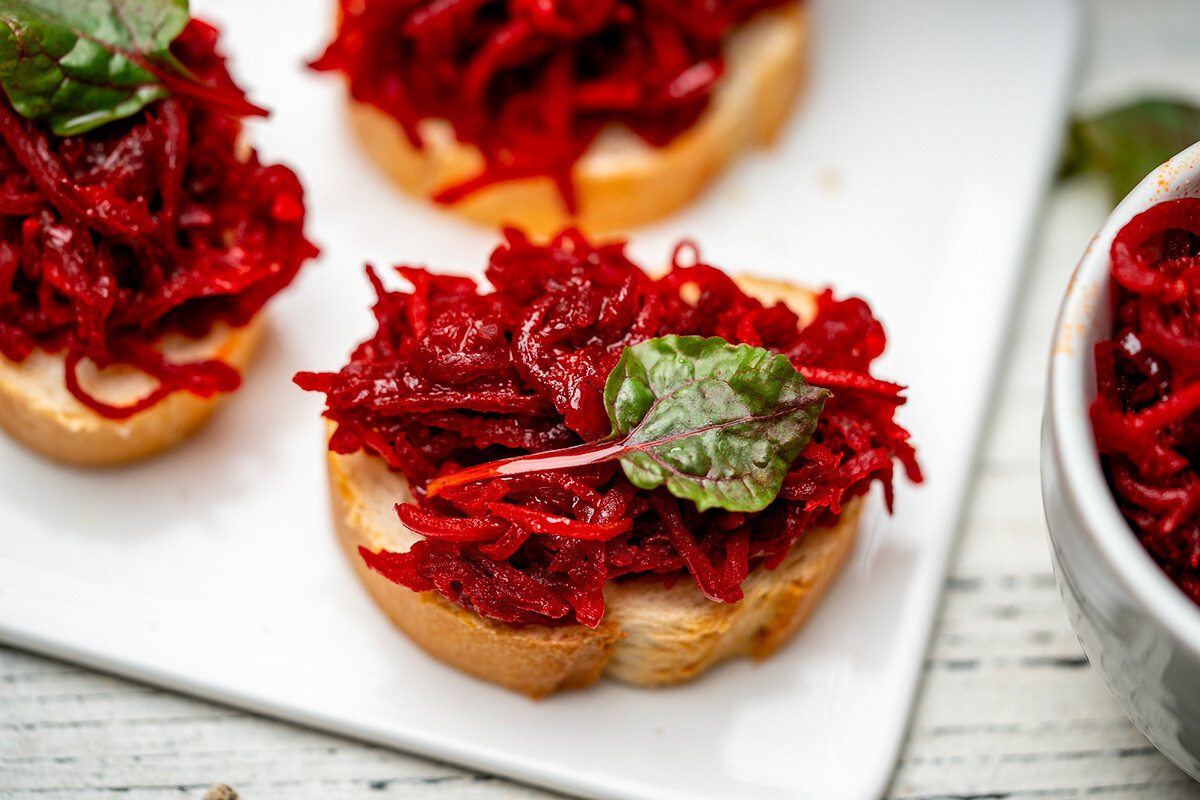
Dear readers,
Our website and social media accounts are under threat of being restricted or banned, due to the current circumstances. So, to keep up with our latest content, simply do the following:
Subscribe to our Telegram channels: Russia Beyond and The Russian Kitchen
Subscribe to our weekly email newsletter
Enable push notifications on our website
Install a VPN service on your computer and/or phone to have access to our website, even if it is blocked in your country
If using any of Russia Beyond's content, partly or in full, always provide an active hyperlink to the original material.
Subscribe
to our newsletter!
Get the week's best stories straight to your inbox